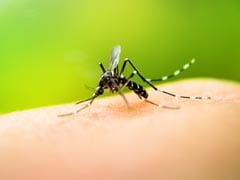Understanding these risks is crucial for consumers aiming to make informed choices about their cosmetic products.

Health Risks Of Siloxanes In Beauty Products
Siloxanes, commonly known as silicones, are prevalent ingredients in a myriad of beauty and personal care products, including moisturisers, hair treatments, deodorants, and foundations. They are valued for their ability to impart a smooth texture, enhance spreadability, and provide a silky finish. However, emerging research has raised concerns about the potential health and environmental risks associated with certain siloxanes, particularly cyclic variants like cyclotetrasiloxane (D4) and cyclopentasiloxane (D5). Understanding these risks is crucial for consumers aiming to make informed choices about their cosmetic products.
Understanding siloxanes
Siloxanes are a group of compounds characterised by silicon-oxygen bonds, forming the backbone of silicone-based substances. In cosmetics, they function primarily as conditioning agents, delivering a smooth application and a non-greasy feel. Their volatility allows for quick evaporation, leaving behind a pleasant sensory experience without residue. Despite these benefits, certain siloxanes have come under scrutiny due to their potential adverse effects on health and the environment.
Health concerns associated with siloxanes
Several studies and regulatory assessments have highlighted potential health risks of siloxanes.
1. Endocrine disruption
The European Union classifies D4 as an endocrine disruptor, indicating evidence that it interferes with hormone function. Such disruptions can lead to hormonal imbalances and reproductive issues.
2. Reproductive toxicity
Research suggests that D4 may impair human fertility. Additionally, D5 has been associated with uterine tumours in animal studies, raising concerns about its safety in long-term exposure.
3. Bioaccumulation and persistence
Siloxanes like D4 and D5 are noted for their persistence in the environment and potential to bioaccumulate in aquatic organisms, leading to long-lasting ecological impacts.
4. Organ toxicity
Some studies have indicated that exposure to certain siloxanes can result in liver toxicity and may affect neurotransmitter functions in the nervous system.
Regulatory actions and recommendations
In response to these concerns, various regulatory bodies have taken action. Consumers are advised to scrutinise product ingredient lists for compounds such as cyclotetrasiloxane (D4) and cyclopentasiloxane (D5) and consider alternatives that do not contain these substances.
a. European Union
As of January 2022, the EU has banned the use of D4 in cosmetic products due to its classification as an endocrine disruptor.
b. Environment Canada
Assessments have concluded that D4 and D5 are toxic, persistent, and have the potential to bioaccumulate, leading to recommendations for restricted use.
While siloxanes contribute desirable qualities to beauty products, awareness of their potential health and environmental risks is essential. By staying informed and choosing products wisely, consumers can mitigate exposure to potentially harmful substances and promote overall well-being.
Disclaimer: This content including advice provides generic information only. It is in no way a substitute for a qualified medical opinion. Always consult a specialist or your own doctor for more information. NDTV does not claim responsibility for this information.
DoctorNDTV is the one stop site for all your health needs providing the most credible health information, health news and tips with expert advice on healthy living, diet plans, informative videos etc. You can get the most relevant and accurate info you need about health problems like diabetes, cancer, pregnancy, HIV and AIDS, weight loss and many other lifestyle diseases. We have a panel of over 350 experts who help us develop content by giving their valuable inputs and bringing to us the latest in the world of healthcare.














